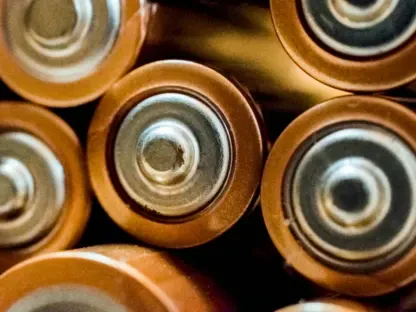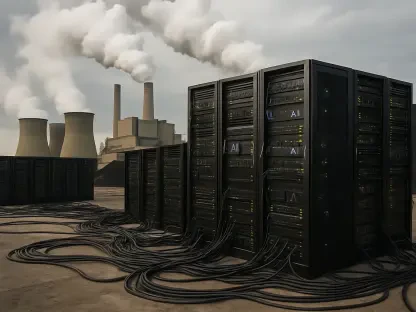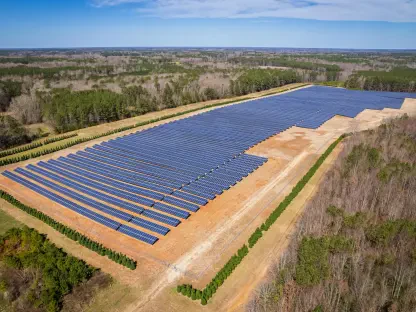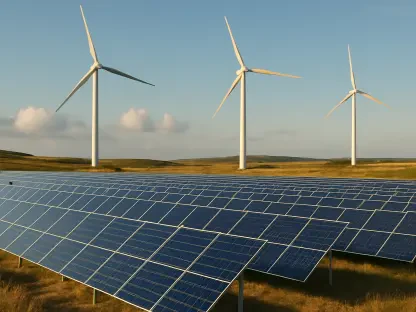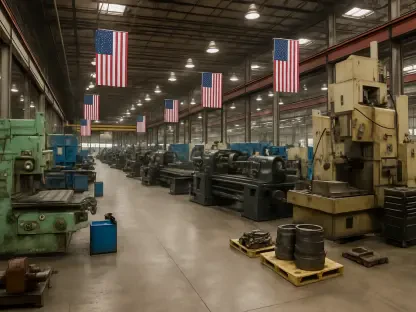In a landscape where millions of disposable cups end up in landfills each day across the United States, a pressing question emerges: can a single waste management giant shift the paradigm of recycling? WM, a leader in the industry, has taken a bold step by including polypropylene (PP) plastic and paper to-go cups in its curbside recycling program. This move promises to tackle a significant portion of everyday waste, but opinions vary on its impact. This roundup gathers insights from multiple industry stakeholders, environmental advocates, and municipal perspectives to explore whether this initiative can truly transform recycling practices. The discussion aims to uncover the potential, challenges, and broader implications of integrating cups into curbside bins.
Exploring Industry Perspectives on WM’s Recycling Expansion
Technological Innovations Driving Change
Industry leaders have noted that WM’s substantial $1.4 billion investment in automated Material Recovery Facilities (MRFs) is a cornerstone of this initiative. Advanced sorting technologies are seen as a game-changer, enabling the efficient handling of diverse materials like PP and paper cups with reduced contamination. Many in the sector applaud this focus on automation for producing higher-quality bales that meet stringent market standards.
However, not all feedback is entirely positive. Some facility operators express concern over an over-reliance on technology, arguing that machines, while efficient, cannot fully address the nuances of mixed waste streams. There’s also a shared worry about consumer education lagging behind, with many households still unclear on what can be recycled, potentially undermining technological gains.
A contrasting view comes from tech-focused analysts who emphasize the long-term benefits of such investments. They argue that automation not only boosts operational efficiency but also sets a precedent for other companies to upgrade infrastructure. This could lead to a ripple effect, enhancing recycling capabilities nationwide over the coming years.
Market Dynamics and Demand for Recycled Materials
Stakeholders in the manufacturing sector highlight a strong and growing demand for recycled PP plastic and paper cups as a key driver behind WM’s decision. Mills and manufacturers point to specific applications, such as paper cups being repurposed into paperboard and PP plastics transformed into products like paint cans and plastic lumber, showcasing a vibrant end market.
Yet, some market observers caution against over-optimism, noting regional disparities in demand. In areas with limited processing facilities, the influx of recycled cups might outstrip local capacity, leading to stockpiling or reduced profitability. This concern raises questions about whether WM can ensure consistent market absorption across its vast network.
On the flip side, recycling advocates see this as an opportunity for WM to lead in material recovery. They argue that by aligning with major end markets, the company can stimulate further investment in recycling infrastructure. This perspective underscores a belief that strategic partnerships could help balance supply and demand, creating a more sustainable material loop.
Industry Trends and the Push for Standardization
Voices from recycling associations and policy groups align WM’s move with broader sector trends toward standardization. Many reference recent updates by organizations like the Recycled Materials Association (ReMA), which have expanded material specifications to include cups, as a signal of industry consensus. This is seen as a step toward uniform recycling practices.
Differing opinions emerge when discussing regional adoption. Municipal representatives often highlight the challenge of inconsistent local policies, noting that not all areas served by WM will automatically accept cups due to legacy contracts or limited infrastructure. This patchwork of acceptance creates confusion and hampers progress.
Advocacy groups counter this by stressing the potential for initiatives like How2Recycle labels to bridge gaps. They argue that achieving designations such as “Widely Recyclable” for PP cups could spur wider acceptance if paired with education campaigns. Their viewpoint suggests that WM’s actions might catalyze a domino effect, encouraging other firms and municipalities to align with emerging standards.
Addressing Recycling Disparities and Regional Challenges
Environmental organizations frequently point out the stark disparity in recycling rates, particularly for PP plastics, which lag significantly behind materials like high-density polyethylene (HDPE). Many commend WM for targeting this gap, viewing the inclusion of cups as a strategic move to boost recovery rates through expanded curbside access.
Contrasting opinions come from competing waste management entities, some of whom remain hesitant to universally accept plastic cups. Representatives from other firms argue that without guaranteed end markets or sufficient sorting capacity, such expansions risk overwhelming systems. This caution reflects a more conservative approach compared to WM’s proactive stance.
A third perspective from community coalitions emphasizes the role of partnerships in overcoming regional hurdles. Collaborations with entities like The Recycling Partnership are seen as vital for updating local policies and raising awareness. This angle suggests that WM’s influence could extend beyond its operations, shaping recycling frameworks in diverse communities.
Key Takeaways from Diverse Voices
Reflecting on the range of insights, several themes stood out in this discussion. WM’s infrastructure upgrades and alignment with market needs garnered widespread support, though tempered by concerns over regional inconsistencies and consumer confusion. The push for standardized practices resonated across stakeholders, yet the practical challenges of municipal variations remained a sticking point. Differing views on technological reliance and market capacity highlighted the complexity of scaling such an initiative.
Reflecting on a Milestone in Recycling
Looking back, the discourse around WM’s inclusion of cups in curbside recycling revealed a pivotal moment in waste management history. It underscored a collective recognition of the need to adapt to evolving waste streams while navigating operational and market constraints. Moving forward, actionable steps include municipalities updating local guidelines to align with broader standards and consumers checking recyclability labels for clarity. Further exploration of collaborative models, such as partnerships with advocacy groups, could help sustain momentum. Engaging with community initiatives and staying informed on industry developments remain critical for all stakeholders aiming to advance sustainable waste practices.



